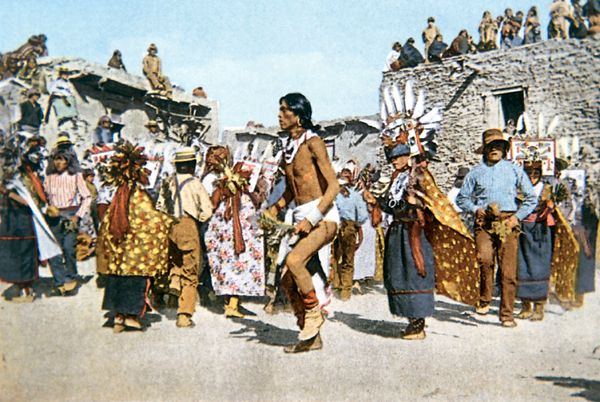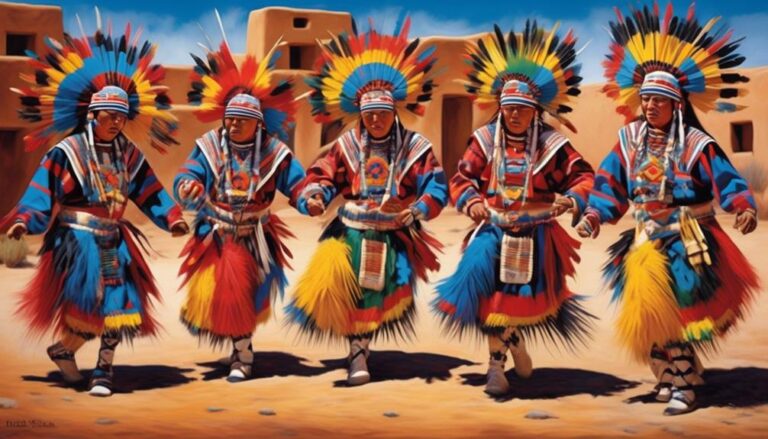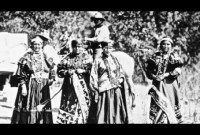
Echoes of the Earth: The Enduring Spirituality of the Pueblo Peoples
In the sun-baked landscapes of the American Southwest, where ancient mesas pierce the azure sky and the Rio Grande carves its timeless path, live the Pueblo peoples. For millennia, their communities have thrived, built on a foundation as enduring as the adobe walls of their homes: a profound and intricate spiritual practice that is not merely a set of rituals, but the very fabric of life itself. It is a spirituality deeply intertwined with the land, the seasons, and the cosmos, offering a compelling testament to human resilience and an unbroken connection to the sacred.
While each of the 19 Pueblos in New Mexico, and the Hopi in Arizona, possesses its unique dialect, customs, and ceremonial variations, a shared cosmology and profound reverence for the natural world bind them together. Their spiritual practices are holistic, permeating every aspect of daily existence, from planting corn to building homes, from the birth of a child to the passing of an elder.

The Land as Living Entity: A Foundation of Reverence
For the Pueblo, the land is not merely territory; it is a living entity, a sacred being that sustains life and holds the memories of ancestors. Mountains are not just geological formations but sacred peaks, home to powerful spirits. Rivers are not just watercourses but arteries carrying life and prayers. This deep connection to place is foundational to their spirituality.
"The land is our first teacher, our provider, our ancestor," one Pueblo elder is often quoted as saying. "We do not own it; we belong to it. Our prayers rise from its soil, and our lives are woven into its fabric." This sentiment encapsulates a worldview where humanity is not separate from nature, but an integral, interdependent part of it. Every action, every ceremony, is rooted in the understanding of this symbiotic relationship. The health of the land is the health of the people, and vice-versa.
A Cosmology of Balance and Reciprocity
Pueblo spirituality is built upon a cosmology that emphasizes balance, harmony, and reciprocity. The world is seen as interconnected, a "sacred hoop of life" where humans, animals, plants, and spirits all play vital roles. There is no concept of a distant, interventionist deity; rather, the divine is immanent, present in every rock, every cloud, every living thing.
Central to this worldview are cycles: the cycle of seasons, the cycle of planting and harvest, the cycle of life, death, and renewal. Ceremonies are often timed to align with these natural rhythms, ensuring the continuation of life and the well-being of the community. The sun, moon, and stars are not just celestial bodies but vital spiritual entities that guide human endeavors and mark sacred time.
The Power of Ceremony: Dances, Chants, and Kivas
The most visible, yet often misunderstood, aspect of Pueblo spiritual practice are their elaborate public and private ceremonies. These events, often involving intricate dances, chants, and symbolic regalia, are not performances for outsiders but profound acts of devotion and communion. Their purposes are multifaceted: to bring rain, ensure a bountiful harvest, heal the sick, mark rites of passage, or simply to give thanks.

Visitors to Pueblos might witness awe-inspiring dances in the plaza, such as the Corn Dance, Buffalo Dance, or Turtle Dance. These dances, often accompanied by rhythmic drumming and ancient chants, are prayers in motion. The dancers, adorned with feathers, evergreen boughs, and symbolic paint, embody the spirits or beings they honor, acting as intermediaries between the human and spirit worlds. It’s crucial to understand that while some dances are shared, many sacred ceremonies are private, held within kivas or other restricted areas, and are not for external observation. This privacy protects the integrity and potency of the practices.
Central to Pueblo spiritual life are the kivas, circular, subterranean chambers that serve as sacred ceremonial spaces. Kivas are more than just buildings; they are symbolic wombs of the earth, representing the place from which the Pueblo people emerged onto this world. Their design often reflects the cosmos, with a central fire pit, a sipapu (a small hole in the floor symbolizing the place of emergence), and a ladder leading to the surface, connecting the underworld, the present world, and the sky world. It is within these hallowed spaces that profound spiritual knowledge is passed down, initiations take place, and the most sacred rituals are conducted, far from the gaze of the uninitiated.
Oral Tradition and the Ancestral Wisdom
The wisdom of generations is passed down through a rich oral tradition. Elders, who are deeply revered, serve as living libraries, custodians of their people’s history, spiritual knowledge, and ceremonial protocols. Stories, myths, and songs transmit vital lessons about morality, community responsibility, and the sacred nature of existence. This oral tradition is a dynamic, living force, adapting to new challenges while holding fast to core truths.
Ancestors play a pivotal role in Pueblo spirituality. They are not merely remembered but are considered active participants in the lives of the living, offering guidance and blessings. Reverence for ancestors is woven into daily practices, from offering food to speaking their names, ensuring a continuous connection across generations. This unbroken chain of knowledge and spiritual practice is what has allowed Pueblo culture to persist for thousands of years.
Key Symbols and Spiritual Beings
Many symbols permeate Pueblo spiritual life. Corn, for instance, is far more than just a food crop; it is often revered as the "Corn Mother," symbolizing sustenance, life, and the sacred cycle of growth. Its cultivation is a spiritual act, imbued with prayers for rain and gratitude for abundance. Similarly, water in the arid Southwest is seen as the essence of life itself, a sacred gift from the heavens, and prayers for rain are among the most fervent.
Among the Hopi and Zuni Pueblos, the Kachinas (or Koko in Zuni) are central. These spiritual beings represent various aspects of the natural world, ancestors, or specific qualities. During ceremonial periods, initiated men embody these spirits through elaborate masks and costumes, dancing in the plazas to bring blessings, rain, and fertility. The Kachina system is a complex, profound aspect of their religious life, deeply rooted in their worldview and teaching moral lessons and the importance of community harmony.
Resilience in the Face of Adversity
The enduring nature of Pueblo spiritual practices is a testament to their extraordinary resilience. For centuries, these traditions faced immense pressure: the Spanish Inquisition sought to suppress indigenous religions, forcing conversion to Catholicism and destroying sacred objects. Later, American assimilation policies aimed to dismantle tribal structures and ban ceremonial practices.
Yet, the Pueblo peoples adapted, often incorporating elements of Catholicism into their existing spiritual framework, creating unique syncretic expressions. They practiced their traditional ceremonies in secret, passing them down through generations even under threat of severe punishment. The Pueblo Revolt of 1680, a pivotal moment in Native American history, was not just a fight for political freedom but a profound assertion of spiritual sovereignty, a refusal to abandon their ancestral ways. This deep spiritual root has been the bedrock of their astonishing endurance.
Challenges and the Path Forward
Despite their remarkable endurance, Pueblo spiritual practices face contemporary challenges. Commercialization of sacred items, land encroachment, and the allure of mainstream culture can threaten the integrity and continuity of traditions. The engagement of younger generations is crucial, and communities are actively working to instill pride and knowledge in their youth, often through language immersion programs and hands-on ceremonial participation.
Yet, the commitment to preserving these traditions remains fierce. Pueblo leaders and elders continue to guard their sacred knowledge, educate their youth, and advocate for the protection of their ancestral lands and cultural heritage. They understand that their spiritual practices are not just about the past; they are vital for navigating the present and ensuring a sustainable future.
The spiritual practices of the Pueblo peoples are not relics of a bygone era. They are vibrant, living traditions that continue to shape identity, foster community, and offer profound lessons about humanity’s interconnectedness with the earth and the cosmos. They stand as a powerful reminder that true wealth lies not in material possessions, but in a deep, reverent relationship with the sacred dimensions of life, echoing through the ages like the timeless winds across the mesas.


